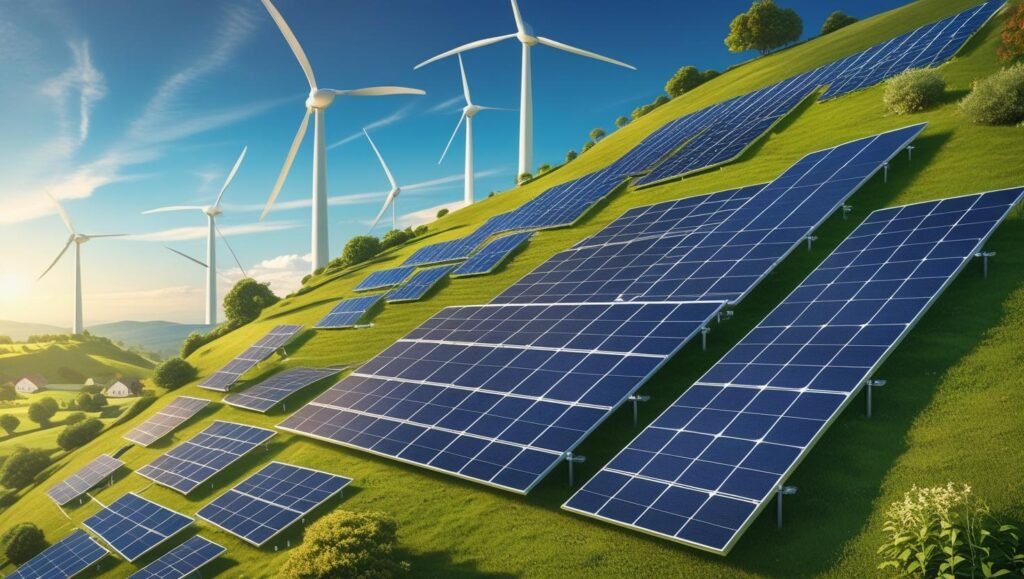The construction industry, a vital engine of global development, has historically been a significant consumer of resources and a contributor to environmental impact. However, a transformative shift is underway, driven by the imperative for sustainable construction. Innovations in green technology are paving the way for building practices that minimize ecological footprints, conserve energy, utilize clean materials, and ultimately create a greener and more resilient built environment. Embracing sustainable construction with green tech is no longer an option but a necessity for a healthier planet.
Defining Sustainable Construction with Green Tech
Sustainable construction goes beyond simply building “green” buildings. It encompasses the entire lifecycle of a construction project, from material sourcing and design to construction, operation, maintenance, and eventual demolition. Integrating green technology at every stage is key to achieving true sustainability. This means adopting innovative solutions that reduce waste, conserve resources, minimize carbon emissions, and enhance the health and well-being of occupants.

Key Innovations in Green Technology for Sustainable Construction
The green technology landscape is brimming with innovations that are revolutionizing sustainable construction:
1. Sustainable Building Materials
Moving away from resource-intensive materials like traditional concrete and steel is crucial. Green technology is fostering the development and adoption of:
- Recycled and Reclaimed Materials: Utilizing salvaged wood, recycled steel, and reclaimed bricks reduces the demand for virgin resources and minimizes landfill waste. You can often purchase sustainable construction materials that incorporate high percentages of recycled content.
- Bio-based Materials: Materials derived from renewable biological sources, such as bamboo, timber from sustainably managed forests, hempcrete, and mycelium-based composites, offer lower embodied energy and can even sequester carbon.
- Low-Impact Concrete Alternatives: Innovations in concrete production, including the use of supplementary cementitious materials (SCMs) like fly ash and slag and the development of carbon-cured concrete, significantly reduce the carbon footprint of this widely used material. (Source: Think Brick Australia, “Sustainable Building Materials”)

2. Energy Efficiency Technologies
Reducing operational energy consumption is a cornerstone of sustainable construction.9 Green technology offers numerous solutions:
- High-Performance Insulation: Advanced insulation materials minimize heat loss and gain, reducing the need for excessive heating and cooling.
- Energy-Efficient Windows and Doors: Designed to minimize thermal transfer, these components play a significant role in reducing energy bills.
- Smart Building Management Systems: These systems use sensors and automation to optimize energy use for lighting, HVAC, and other building systems based on occupancy and real-time conditions.
- Renewable Energy Integration: Incorporating solar photovoltaic (PV) panels, small-scale wind turbines (though less common in dense urban environments), and geothermal heat pumps directly generates clean energy on-site, reducing reliance on fossil fuel-based power.13
3. Water Conservation Technologies
Efficient water management is integral to sustainable construction:
- Low-Flow Fixtures: Installing water-efficient toilets, faucets, and showerheads significantly reduces water consumption.14
- Rainwater Harvesting Systems: Collecting and reusing rainwater for irrigation, toilet flushing, and other non-potable uses conserves precious water resources.15
- Greywater Recycling Systems: Treating and reusing wastewater from sinks and showers for irrigation offers another avenue for water conservation.16
4. Waste Reduction and Circular Economy Principles
Adopting circular economy principles minimizes construction and demolition waste:17
- Design for Disassembly: Designing buildings with components that can be easily disassembled and reused or recycled at the end of their lifespan.18
- Prefabrication and Modular Construction: These methods reduce on-site waste and improve material efficiency.19
- Construction Waste Management Plans: Implementing strategies for sorting, reusing, and recycling construction and demolition debris.20 You can often find green construction solutions that specialize in waste management.

5. Advanced Construction Techniques
Innovative building methods also contribute to sustainability:
- 3D Printing in Construction: This emerging technology can reduce material waste and construction time, allowing for more complex and efficient designs.21
- Building Information Modeling (BIM): BIM allows for better design coordination, clash detection, and material quantity estimation, minimizing errors and waste during construction.22
Industry Leaders and Global Initiatives
Several companies and regions are at the forefront of driving sustainable construction through green technology:
- Vestas wind turbines: While primarily focused on renewable energy generation, the manufacturing and transportation of large components like Vestas wind turbines necessitate a commitment to sustainable construction practices within their own operations and supply chains.
- China renewable energy tech: China has become a global leader in the production of many green technology components, including solar panels.23 While their overall construction practices vary, their advancements in manufacturing sustainable materials and renewable energy infrastructure are crucial for global sustainable construction efforts. (Source: China Dialogue, “China’s cities are getting greener – but how sustainable are they?”)
- Many architectural and engineering firms globally are now specializing in sustainable construction, offering expertise in designing and implementing green technology solutions.24 You can find green construction solutions by searching for certified green building professionals.
Making the Shift: How to Purchase Sustainable Construction Materials and Implement Green Technology
For developers, builders, and homeowners looking to embrace sustainable construction:
- Research and Specify Green Materials: Actively seek out and purchase sustainable construction materials with low embodied energy, recycled content, and sustainable certifications.
- Prioritize Energy Efficiency: Invest in high-performance building envelopes and integrate renewable energy systems where feasible.
- Implement Water-Saving Measures: Specify low-flow fixtures and consider rainwater or greywater recycling systems.25
- Develop a Waste Management Plan: Plan for construction waste reduction, reuse, and recycling from the outset.26
- Seek Expertise: Engage with architects, engineers, and contractors who specialize in sustainable construction and green technology.27
The transition to sustainable construction is not just an environmental imperative; it also offers long-term economic benefits through reduced operating costs, enhanced building value, and improved occupant health and productivity.28 By embracing green technology, we can build a future where our built environment contributes to a healthier planet for all.
Want to Explore More?
Read our latest piece: Green Technologies of the Future: Which Developments Will Save the World?.
Comment below: What’s your take on the environmental cost of green tech?
Tag us on social media using #GreenTechRealityCheck
nature.com+7thenevadaindependent.com+7lithiumharvest.com+7
Have questions or thoughts? Comment below and let us know what more you’d like to learn about green technology—we’d love to hear from you!







